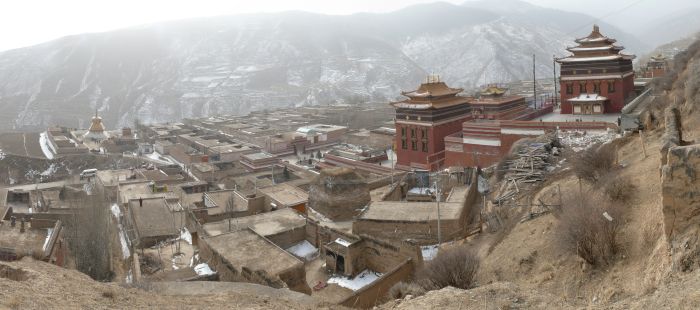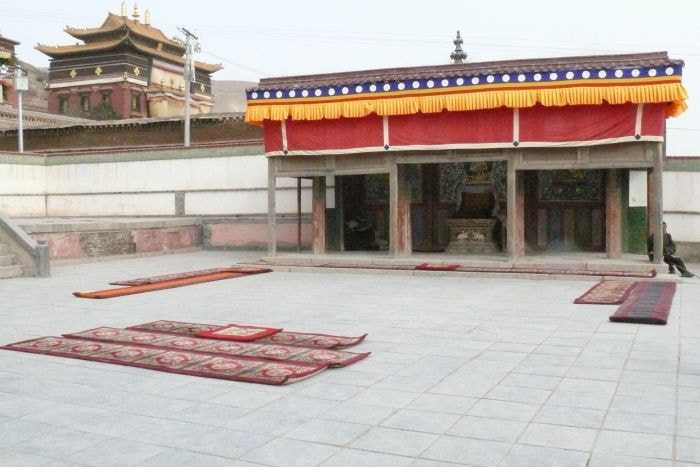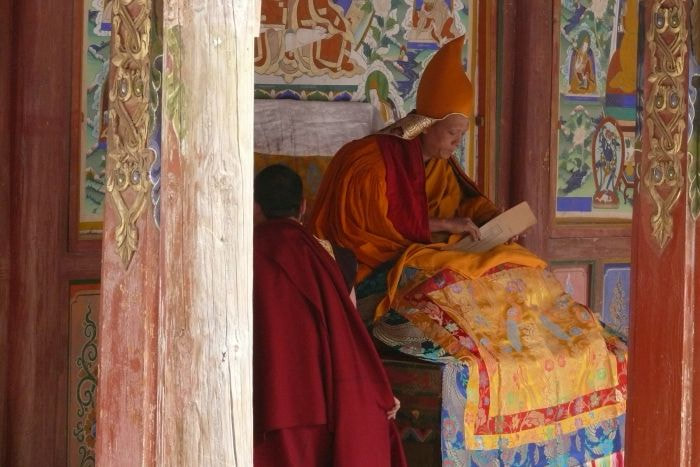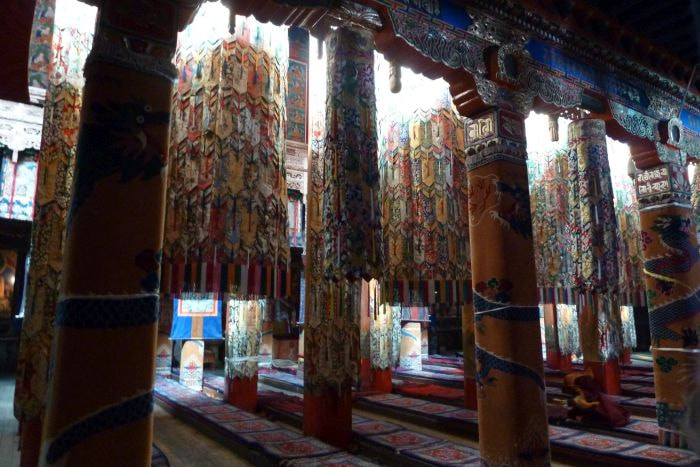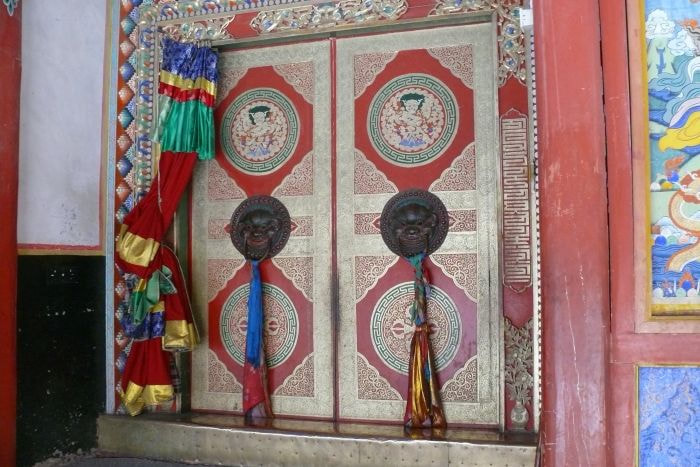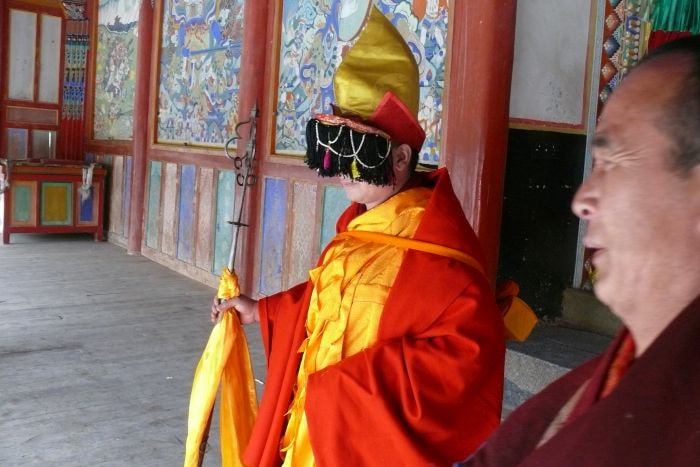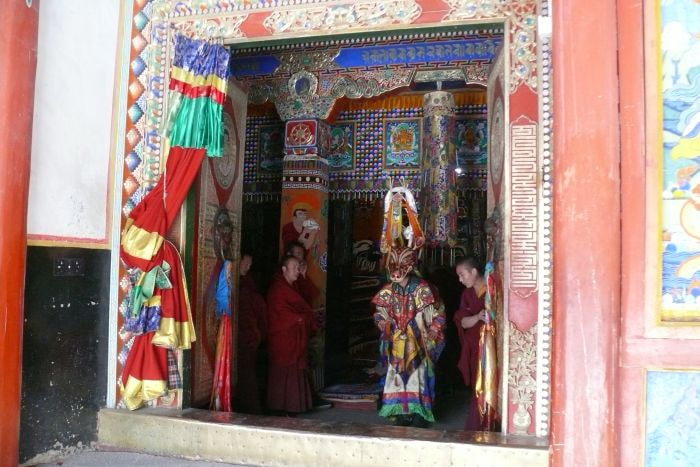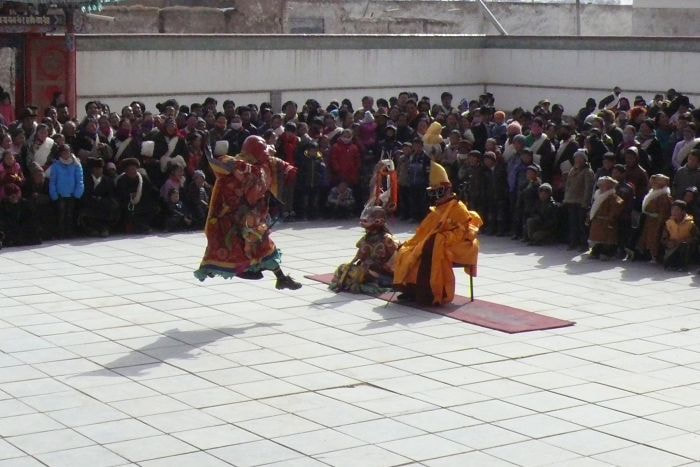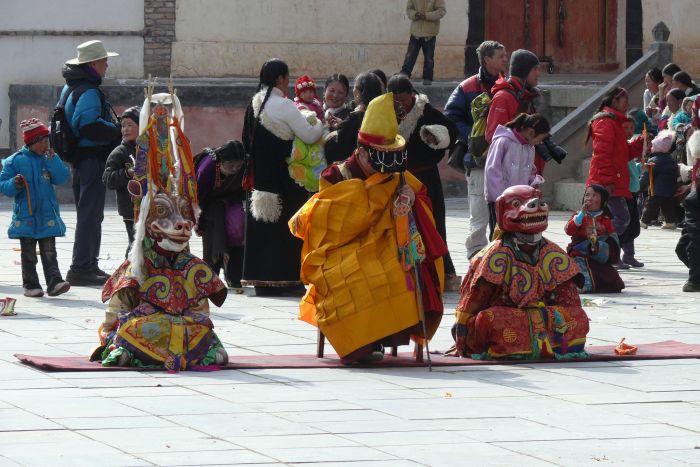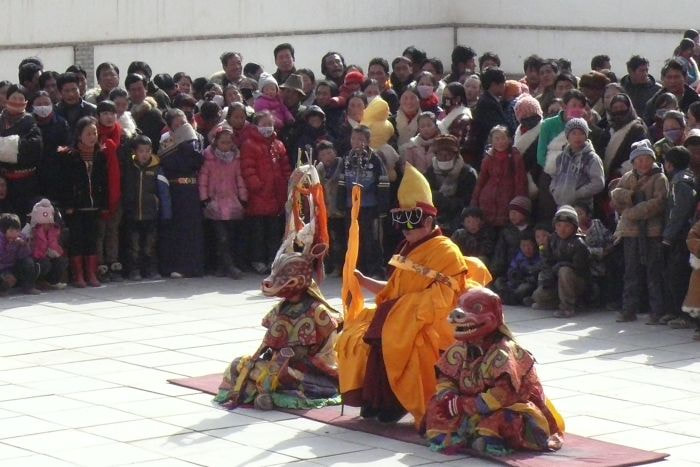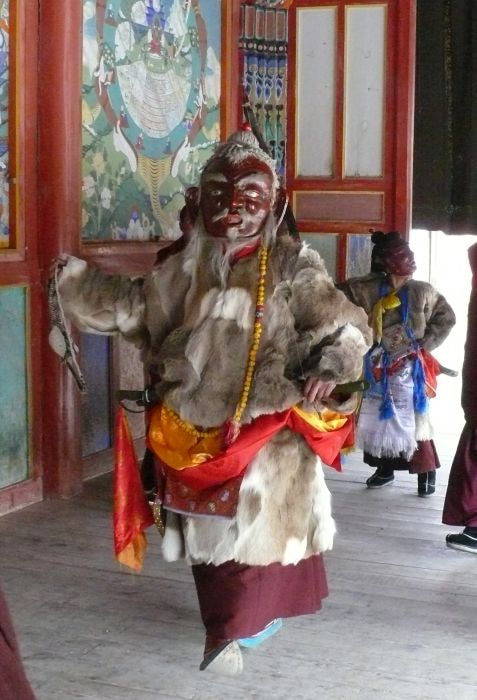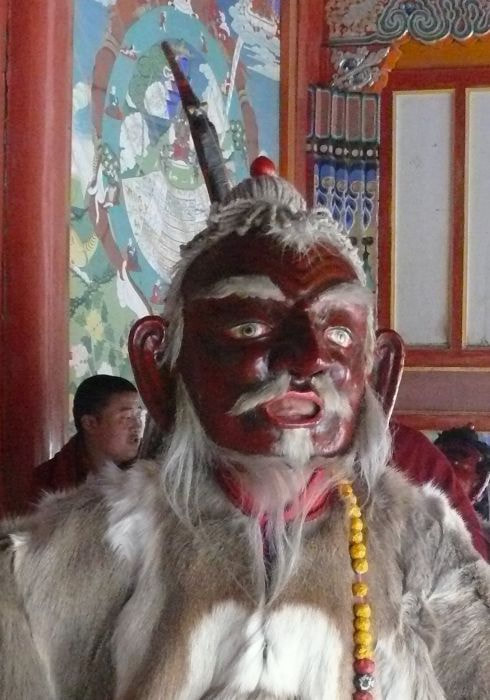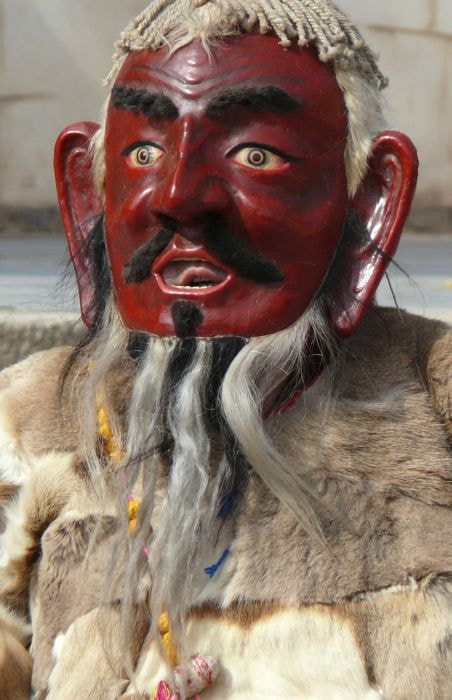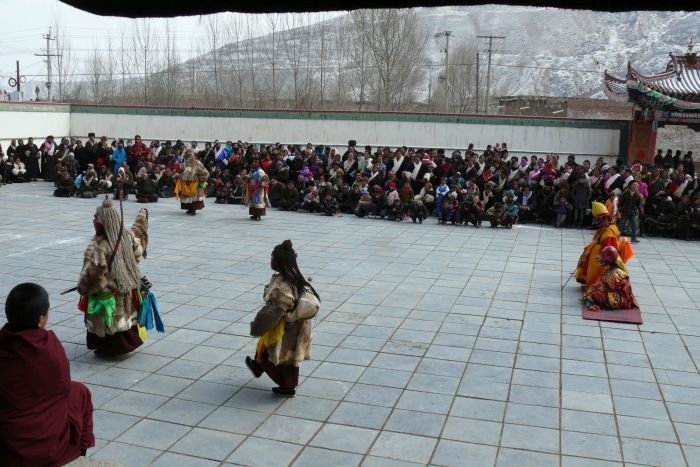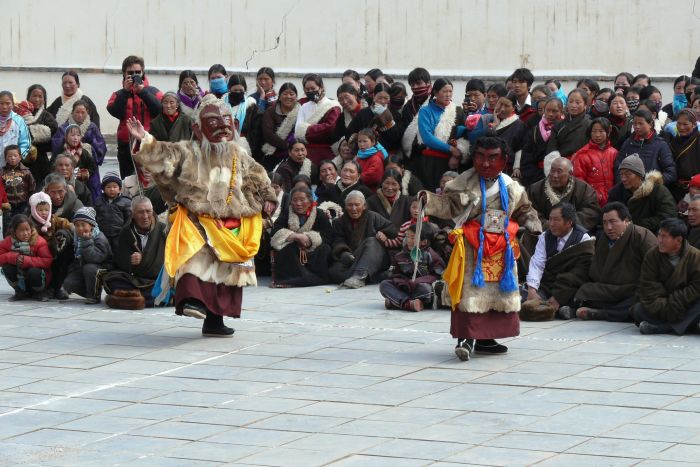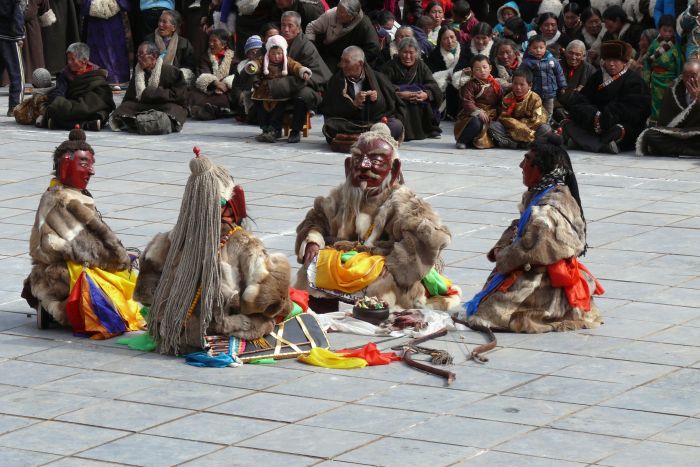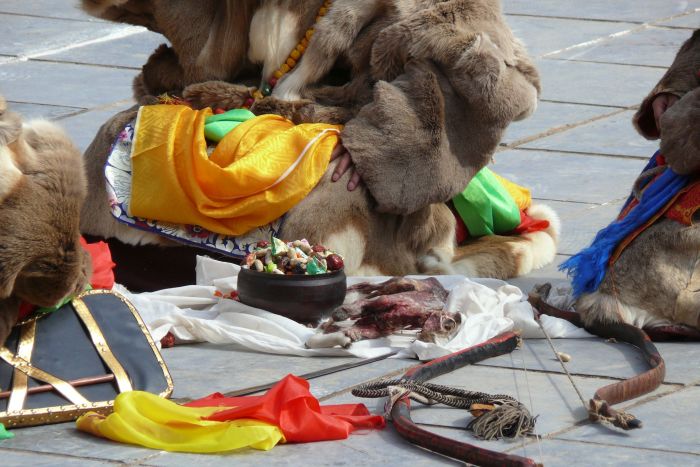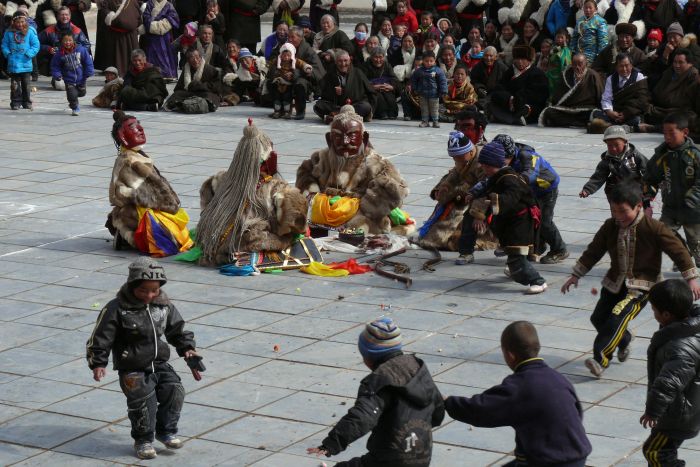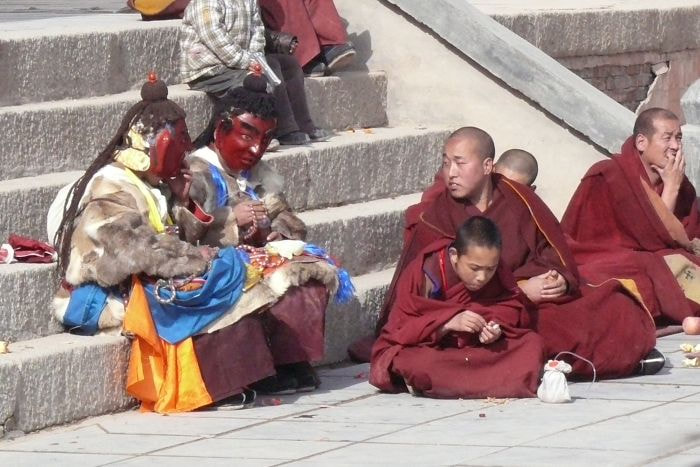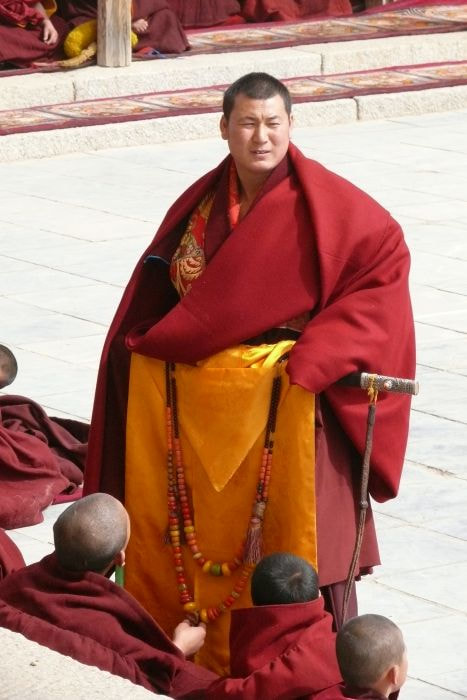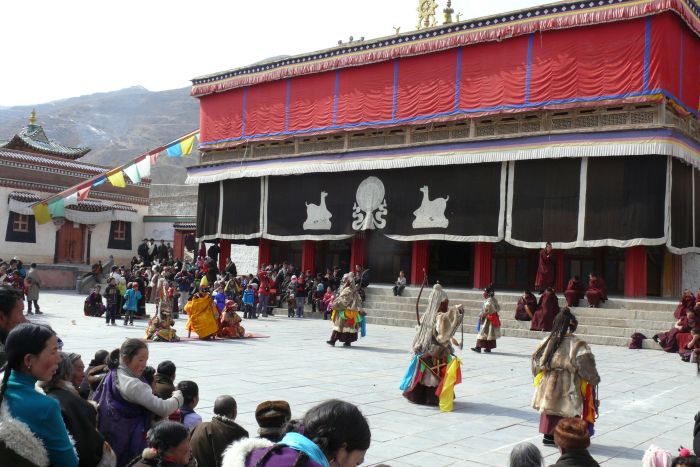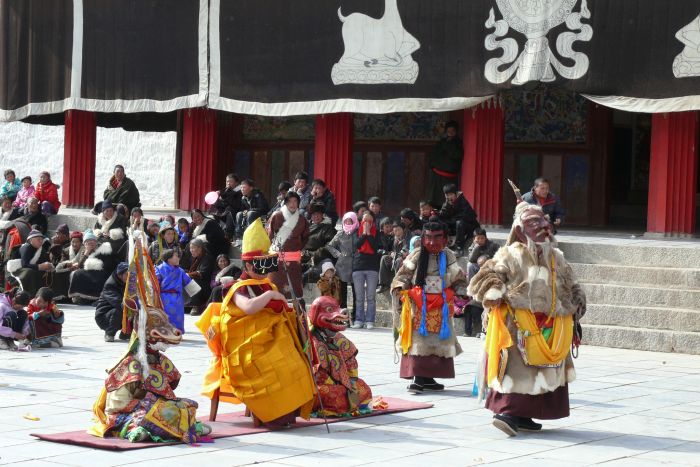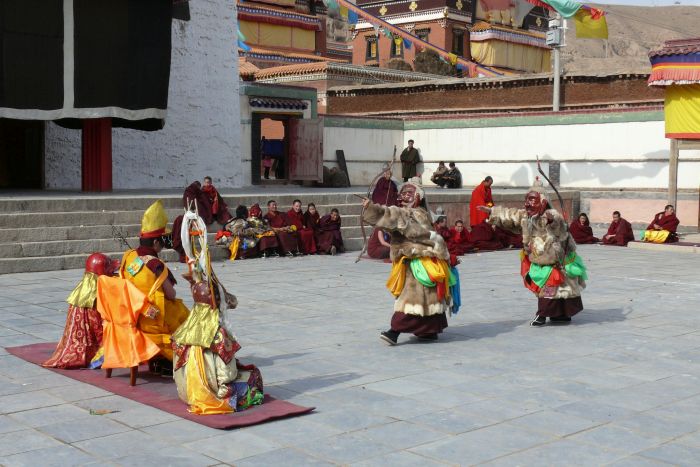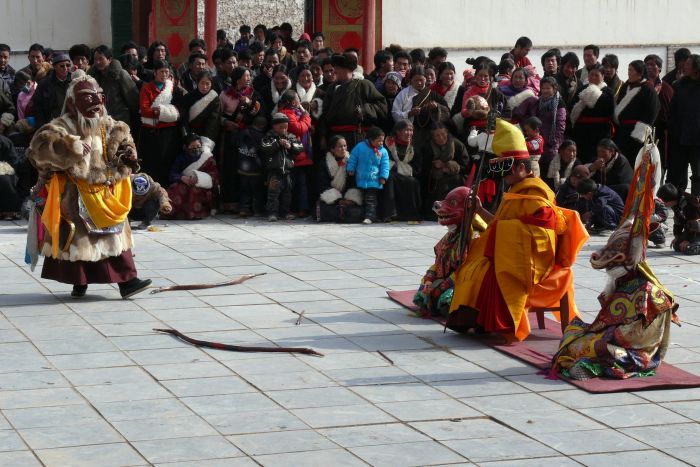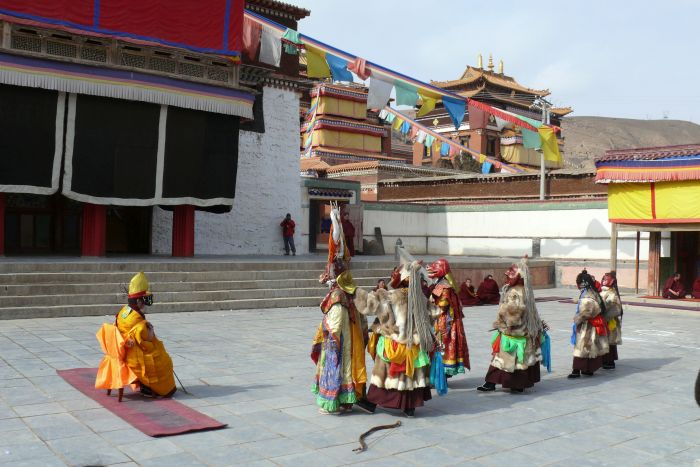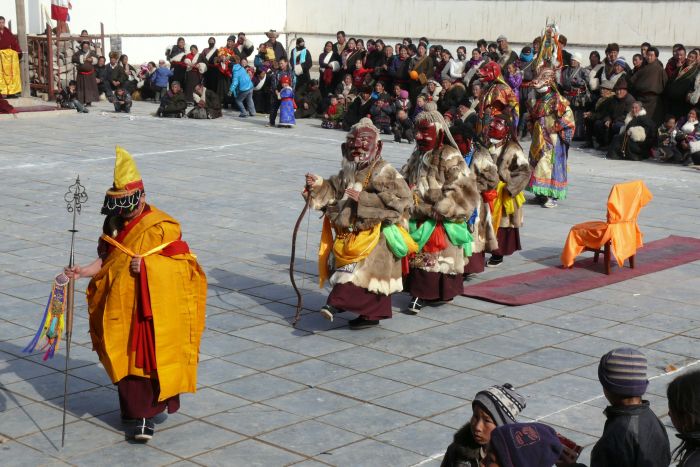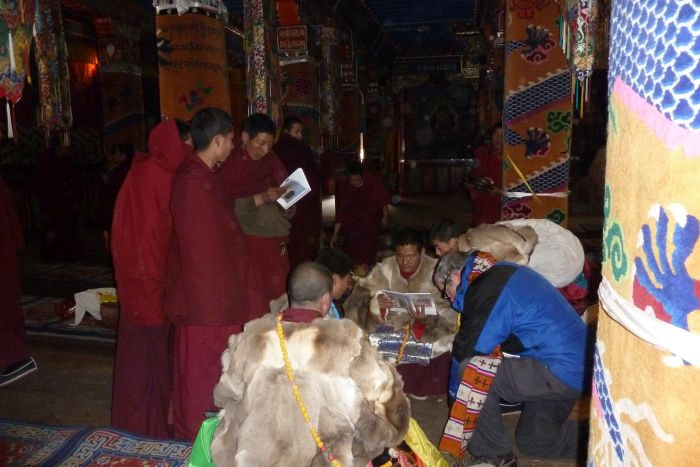Gonpo Dorje / Milarepa Cham
(a Pixplanation)
Milarepa, also known as Milaraspa, is Tibet’s most famous poet-monk. He lived in the 11th century and wrote more than one thousand lyric poems and songs. While in his early life he was a black magic sorcerer, he later repented and with the help of Marpa embraced Buddhism - to such an extent that he achieved enlightenment in one lifetime. Of his many thousands of lyric poems and songs, perhaps his most famous and widely known story is about a hunter named Gonpo Dorje and his conversion to Buddhism. The story has been interpreted as a Cham dance.
The Milarepa Cham relates the story of how Milarepa tamed a hunting dog, stopped it from killing a deer and then convinced Gonpo Dorje (and his younger brother and their two sons) to renounce the killing of animals and accept Buddhist beliefs and the sanctity of life.
The abstract below will walk you through the dance as encountered on three separate occasions (2011, 2012, and 2013) at Bimdo Gonchen Tashi Chokhorling in eastern Qinghai Province.
The Milarepa Cham relates the story of how Milarepa tamed a hunting dog, stopped it from killing a deer and then convinced Gonpo Dorje (and his younger brother and their two sons) to renounce the killing of animals and accept Buddhist beliefs and the sanctity of life.
The abstract below will walk you through the dance as encountered on three separate occasions (2011, 2012, and 2013) at Bimdo Gonchen Tashi Chokhorling in eastern Qinghai Province.
This Gelug monastery is located in a secluded valley, not far from the birthplace of the 10th Panchen Lama. It was founded on the site of an old Sakya monastery in the early 15th century by a disciple-student of Tsongkapa.
Dance courtyard with mats where monks will sit during the opening benediction by the Living Buddha.
Living Buddha on throne eulogizing the Gonpo Dorje Cham.
Assembly hall (with lovely pillar carpets) where dancers relax, dress, and await their performance.
Doorway from Assembly Hall onto courtyard.
Milarepa arrival, carrying his mendicant stick.
Shawa / Deer entrance (note the intricate headpiece).
The deer was being chased by a dog and was badly frightened.
Milarepa saw this, had compassion for the deer and started to sing to it.
The deer was being chased by a dog and was badly frightened.
Milarepa saw this, had compassion for the deer and started to sing to it.
The hunting dog arrives. It has been chasing Shawa and now wants to close for the kill.
Milarepa sees the anger in the dog and wants to pacify it. He sings a song of
compassion and the virtues of Buddhism and subdues the hunting dog.
Milarepa sees the anger in the dog and wants to pacify it. He sings a song of
compassion and the virtues of Buddhism and subdues the hunting dog.
Together, Shawa the deer, Milarepa, and the hunting dog await the imminent arrival of the hunters.
Together, Shawa the deer, Milarepa, and the hunting dog await the imminent arrival of the hunters.
Arrival of Gonpo Dorje,who is followed by his son.
Gonpo Dorje is the elder brother and has a grey beard.
Arrival of Gonpo Dorje’s young brother and his son.
Younger brother’s beard and moustache are not yet fully grey!
The hunters arrive in the courtyard. They as yet have not seen Milarepa or his companions
as they are searching for the deer and listening for the dog.
as they are searching for the deer and listening for the dog.
After searching for some time, Gonpo Dorje is tired and needs to relax.
He invites younger brother for a meal.
He invites younger brother for a meal.
A little meal and good conversation with fathers and sons.
Amongst the many interesting things on the ground is a
bowl of candies for the children in the Cham audience.
bowl of candies for the children in the Cham audience.
Kids are kids everywhere, and they rush for the candy.
This signals the start of an intermission or rest period in the Cham dance.
This signals the start of an intermission or rest period in the Cham dance.
The hunters’ young sons are also able to take a short break.
The dance resumes under the watchful eye of the disciplinarian.
Gonpo Dorje continues searching for, and finds,
Shawa and the hunting dog sitting with Milarepa.
Shawa and the hunting dog sitting with Milarepa.
Milarepa explains to Gonpo Dorje that the dog has now been calmed, has compassion
and respect for all living things, and understands that killing the deer is wrong.
and respect for all living things, and understands that killing the deer is wrong.
Gonpo Dorje is not convinced and will not listen to reason.
Instead, he tries to shoot an arrow to kill Milarepa.
Instead, he tries to shoot an arrow to kill Milarepa.
But the arrow is wide of the mark and falls harmlessly to the ground.
The bows of both hunters also fall to the ground. Milarepa then tells the hunter
that he has plenty of time to shoot him later, but that he should first listen to a song.
And Milarepa sings for Gonpo Dorje.
The bows of both hunters also fall to the ground. Milarepa then tells the hunter
that he has plenty of time to shoot him later, but that he should first listen to a song.
And Milarepa sings for Gonpo Dorje.
As the song ends, Gonpo Dorje is confused. He knows that he is an excellent hunter
and a fine marksman, and yet he missed his target. Why? He also knows that
his hunting dog is one of the finest and best trained in the region, but now the dog is sitting
quietly with the deer. What is happening? Could it be the power of Buddhism?
and a fine marksman, and yet he missed his target. Why? He also knows that
his hunting dog is one of the finest and best trained in the region, but now the dog is sitting
quietly with the deer. What is happening? Could it be the power of Buddhism?
Shawa and hunting dog lead the rejoicing to celebrate the virtue and
wisdom of the Dharma and the strength of Buddhism as a non-violent
and non-confrontational way of life.
wisdom of the Dharma and the strength of Buddhism as a non-violent
and non-confrontational way of life.
As the Gonpo Dorje Cham concludes, all follow Milarepa
for meditation and prayers inside the Assembly Hall.
for meditation and prayers inside the Assembly Hall.
The Gonpo Dorje Cham is a powerful message and shows how Buddhism is pertinent not only to men and women and children but also to animals and all other lifeforms.
The Gonpo Dorje / Milarepa Cham is also a refreshing relief from the more predominant Gonpo Nagpo (Mahakala) Cham and its sonorous music of cymbals and drums and horns.
During the dance, the Gonpo Dorje Cham features fleeting song-dialogue between Gonpo Dorje and his younger brother, between both hunters and their sons, and between the sons themselves. The boys serve as helpers and understudies for their fathers, but also provide comic relief for the audience.
The Gonpo Dorje / Milarepa Cham is also a refreshing relief from the more predominant Gonpo Nagpo (Mahakala) Cham and its sonorous music of cymbals and drums and horns.
During the dance, the Gonpo Dorje Cham features fleeting song-dialogue between Gonpo Dorje and his younger brother, between both hunters and their sons, and between the sons themselves. The boys serve as helpers and understudies for their fathers, but also provide comic relief for the audience.
… and of course at some point it is possible to sit down
with the author and look at some past years’ photos and
the Gonpo Dorje Cham write-up in his book ….
with the author and look at some past years’ photos and
the Gonpo Dorje Cham write-up in his book ….
